You know that thing that happens when a friend makes a passing reference to something that happens to be hyperaligned with one of your personal interests, and you spend the next 20 minutes bombarding them with related facts?
No?
Maybe it’s just me.
Anyway. Recently, a friend on a flying visit to Paris commented that some of the metro stations seem to have unusual names, insofar as they don’t seem to refer to historical neighbourhoods. Naturally, I had a lot of thoughts about this. So, in the style of the inimitable Jonn Elledge – who describes this type of article as a “listicle but for people who like Only Connect” – here are 16 things you might not know about the names of Paris metro stations.
1. Most are named after streets…
An unusual station name is typically the result of the station being named after a local street.
2. …but only occasionally is this explicit in the name.
Usually, if a station is named after a street, it will drop the “rue” (or “boulevard”, or “place”, etc) and just use the part of the name that uniquely identifies it. But for some reason, that’s not always the case. Thus we have “Rue des Boulets”, “Avenue Émile Zola” and “Place Monge”, but not “Rue du Chevaleret”, “Avenue Félix Faure” or “Place de la République”.
3. Some of these streets are rather long, making the names somewhat ambiguous.
In several cases, a station was named after a place (a square, or often a roundabout) which happened to bear the same name as a long street. Although the traffic circle has since been renamed, the station kept the old name. Thus:
- Daumesnil stands in the middle of the 6 km avenue Daumesnil, which is directly served by two other metro stations.
- Voltaire is one of 7 stations under the 3 km boulevard Voltaire.
- Vaugirard is one of 7 stations serving the 4 km rue Vaugirard. In fact, in the early days, Saint-Placide station, built and operated by a different company, had the same name.
Why not call them Félix Éboué, Léon Blum and Adolphe Chérioux, after the modern names of the locations they serve? Éboué’s name is used as a suffix for Daumesnil, but that’s not shown on the map. If it were properly renamed after him, it would be a rare station named after a person of colour.

But perhaps the worst offender is Temple. Not only are there three stations on the rue du Temple, but the rue du Faubourg du Temple has two more, and there’s another on the boulevard du Temple. In 2007, the previously nameless site of the station’s only entrance was baptised in honour of communard revolutionary Élisabeth Dmitrieff; if the station were renamed after her, it would be a rare station named after a woman. More on that later.
But renaming Temple would have a downside: the metro would lose its only station to share its exact name with a station of the London Underground.
4. One or two stations – depending how you count – have counterparts on the London Underground with the same name.
Both Temples are named after areas of land once held by the Knights Templar. The second example is less exact: the Paris metro has Saint-Paul, while the Tube has St Paul’s. These are not named after the same person: Paris’s honours Paul of Thebes, whereas London’s pays tribute to the apostle Paul.
If we include London’s DLR, we have another near-miss with Paris’s George V and the DLR’s King George V. These are named after the same man, on the throne during the First World War. Paris also has a disused metro station which would be another match: Arsenal.
5. Some stations are named after two streets.
There are a few different reasons for this.
- To pinpoint a location: Réaumur-Sébastopol is at the junction of the rue Réaumur with the boulevard de Sébastopol. This works well, but is a little unwieldy.
- Inexplicably, for two parallel streets, for example at Havre-Caumartin. A bus stop at the same location has the more logical name of Havre-Haussmann – after two perpendicular streets – but the same logic wasn’t extended to the metro1.
- Because of pre-RATP history: Marcadet-Poissonniers was once two separate stations, each owned and operated by a different company. They were merged in 1931 – shortly after the companies merged – with the creation of a connecting corridor.

6. Most streets are named after people, and most stations are named after streets. So most stations are named after people.
The roll call includes soldiers, artists, kings, politicians and men of business – and a potato promoter. Inevitably, the biases of how streets were named in the 19th and early 20th centuries show up in the station names.
7. But some are named after places of interest…
These include Hôtel de Ville, the mairies of various towns neighbouring Paris, and sites like the Arts et Métiers museum and the Palais Royal.
8. …especially churches.
Here in famously secular Paris, as many as 13 stations are named after churches: Église d’Auteuil, Église de Pantin, Basilique de Saint-Denis, Madeleine, two Notre-Dames and a bunch of saints.
Various other stations include the names of saints. To start with, 9 refer to towns named after saints: one each for Saint-Mandé and Le Pré-Saint-Gervais, three for Saint-Ouen, three for Saint-Denis, and a further one for the road which once led to Saint-Denis. Others, like Saint-Jacques and Saint-Marcel, take their names from medieval neighbourhoods. Still others are named after streets whose names come from historic churches, abbeys or businesses. In total, the word “saint” appears 28 times on the metro map.
And that’s not the end of the religious names: Cardinal Lemoine is named after a medieval cleric; Filles du Calvaire takes its name from a convent; and Croix de Chavaux is named after a monumental cross once erected at the site. As secular as Paris might be today, its Catholic history is deeply embedded in its toponymy.
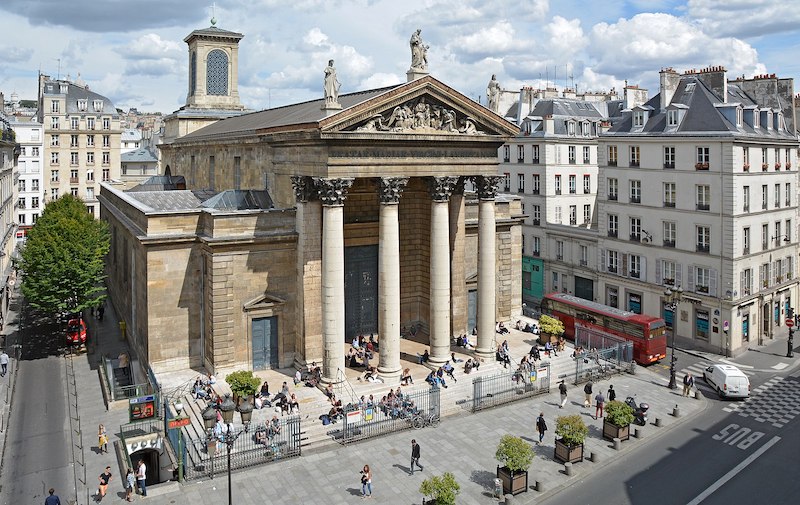
9. Two people give their names to two stations…
These are hero of the left Jean Jaurès and artist Michelangelo. But Michelangelo is cheating, as both stations are named after the same street. Jaurès, whose name crops up in towns all over France, is recognised with a station in the 10th arrondissement of Paris, and another in the western suburb of Boulogne.
10. …while Charles de Gaulle only gets one.
But let’s not cry for him, as the general also gets three RER stations, a bridge, and one of Europe’s busiest airports.
11. There are stations named for three presidents, three prime ministers and one monarch of France. And also Robespierre.
De Gaulle is one of two presidents of the Fifth Republic to have a station named after him. The other is François Mitterrand, whose library megaproject rejuvenated a part of the 13th arrondissement. The only other French president whose name appears on the map is Félix Faure, a man best known for failing to intervene in the Dreyfus affair2 and for the rumours around his death in office.
Three French prime ministers are similarly honoured: Cardinal Richelieu, chief minister to king Louis XIII; Léon Gambetta, an important figure in the early Third Republic; and Georges Clémenceau, another key figure of the Third Republic in charge at the end of the First World War.
There is also a station in the name of the controversial Maximilien Robespierre. His name can’t be found on any of the streets of Paris, but a major axis in Montreuil – like much of the inner ring of Paris suburbs, a traditional stronghold of the far left – does bear his name.
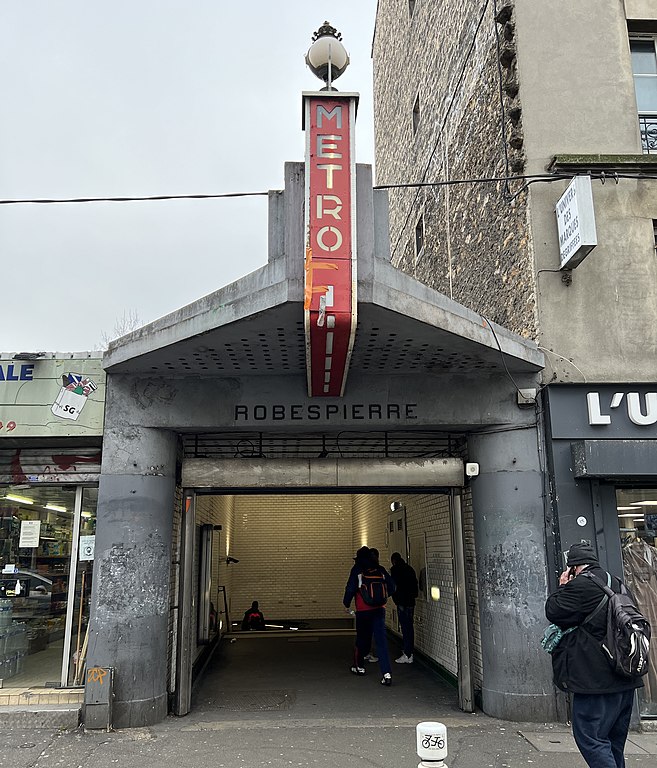
12. Five foreign heads of state also feature on the map.
As we’ve mentioned before, British monarch George V has a station to his name. So do presidents Franklin Roosevelt of the United States, and Simón Bolívar of Colombia, Peru and Bolivia. Giuseppe Garibaldi, who briefly ruled over the island of Sicily, and Joseph Stalin, dictator of the Soviet Union, round out the list. Admittedly, the last one isn’t named in honour of the bloodthirsty autocrat, but after the battle of Stalingrad.
13. 10 stations are named for signed-up members of the French communist party…
Many stations are named in honour of left-wing figures. 10 are named after bona fide members of the French communist party (PCF).
Five of these (Charles Michels, Corentin Cariou, Corentin Celton, Gabriel Péri and Guy Môquet) were executed by the Nazis for resisting. Two others are known for their participation in the Resistance: Colonel Fabien, who died in combat, and Lucie Aubrac, who survived the war.
Two more are better known for other reasons: the poet Louis Aragon and the artist Pablo Picasso.
Rounding out the list is Paul Vaillant-Couturier, a writer, journalist and major political figure who helped found the party.
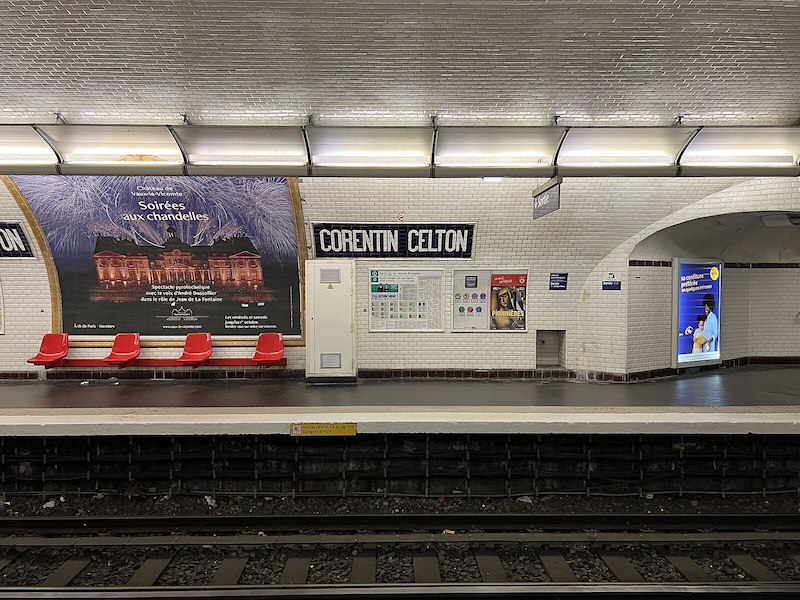
14. …while only 7 are named after women.
That’s few enough to list here:
- Barbès-Rochechouart honours Marguerite de Rochechouart, an 18th century abbess in Montmartre;
- Chardon-Lagache is named for Pierre-Alfred Chardon and Marie-Pauline Lagache, a couple who founded a retirement home at the site in the 19th century;
- Boucicaut remembers another couple, Aristide and Marguerite Boucicaut, who founded a hospital in this part of town;
- Louise Michel honours a revolutionary from the Paris Commune, who later became an influential anarchist;
- Pierre et Marie Curie recognises the extraordinary scientific contributions of the Curie couple – more on that in a moment;
- Barbara takes its name from the stage name of 20th-century singer-songwriter Monique Serf;
- Bagneux – Lucie Aubrac, as we’ve seen, is named after a figure of the French Resistance.
Three other stations are indirectly named after women, but they’re really named after churches: Madeleine (Mary Magdalene) and two Notre-Dames (de Lorette and des Champs). If we want to be really generous, we could also include Filles du Calvaire (“girls of Calvary”), whose name comes from a convent that was once near the site. These would take our total to 11, surpassing the number of PCF members.
But we might also argue that even the count of 7 is generous. Three of the list are named after couples, while Marguerite de Rochechouart is somewhat overshadowed by republican activist Armand Barbès: it’s common to refer to the station only by his name. That leaves only Louise Michel, Barbara and Lucie Aubrac.
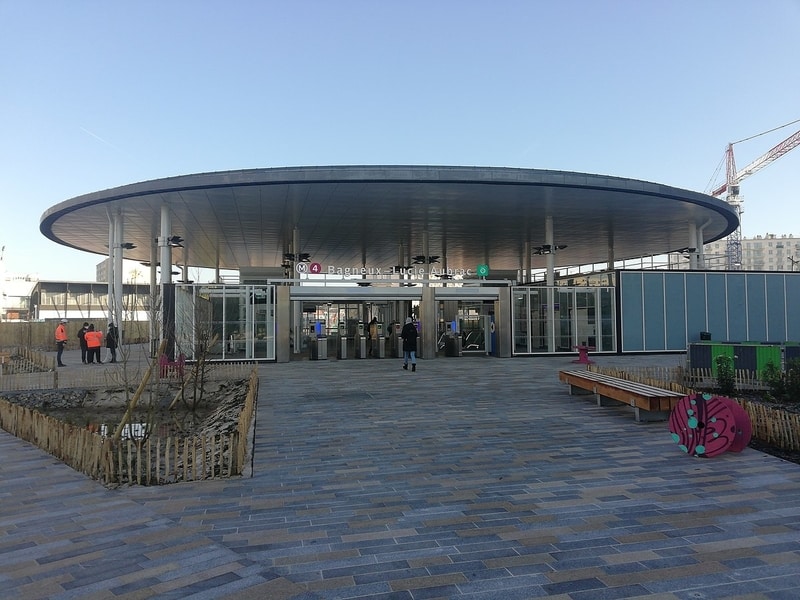
15. Two of those opened as recently as 2022.
Barbara and Bagneux – Lucie Aubrac opened with the extension of line 4 in January 2022. So prior to 2022, only Louise Michel was named after only a woman.
Put another way: before 2022, there were twice as many stations named after Michelangelo than purely after women.
In other recent developments:
- Europe was given the suffix “Simone Veil” in 2018, in honour of the Holocaust survivor who, as health minister, gave women the right to end their pregnancies.
- In 2021, Gaité was suffixed with the name of Josephine Baker, an American-born performer, WWII resister and civil rights activist.
These suffixes are displayed on signs in the stations, but they didn’t make it onto the map.
16. Until 2007, Pierre et Marie Curie honoured only Pierre.
To be clear, Pierre Curie was a great, Nobel-prize-winning physicist. But his wife Maria Skłodowska-Curie was not only the first woman to receive a Nobel prize – in a time when women had to overcome huge barriers just to practise science – but also the first person to win two Nobel prizes, and the only person to date to win in two scientific fields. Why did it take so long to include her in the name?
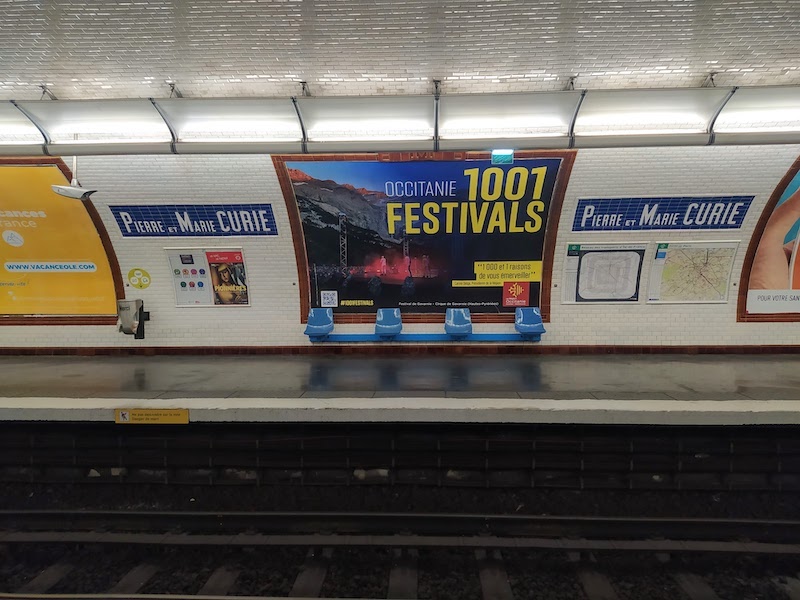
That’s all. For now.
I hope you’ve enjoyed this dive into the names of Paris’s metro stations. I hope you share my consternation at the lack of female representation on the map. But I’m not done: expect a follow-up in the near future with more related facts. Sign up for email updates below to ensure you don’t miss it!
-
If a bus stop is right next to a metro station, shouldn’t they share a name? Or if multiple bus stops serve the same metro, shouldn’t the bus stops’ names at least reference the metro station? Lots to cover in a future post… ↩
-
Ten minutes’ walk away from Félix Faure is Avenue Émile Zola, which honours the author of the celebrated J’accuse…, an open letter calling on Faure to overturn Dreyfus’s wrongful conviction. ↩
 Fabric of Paris
Fabric of Paris